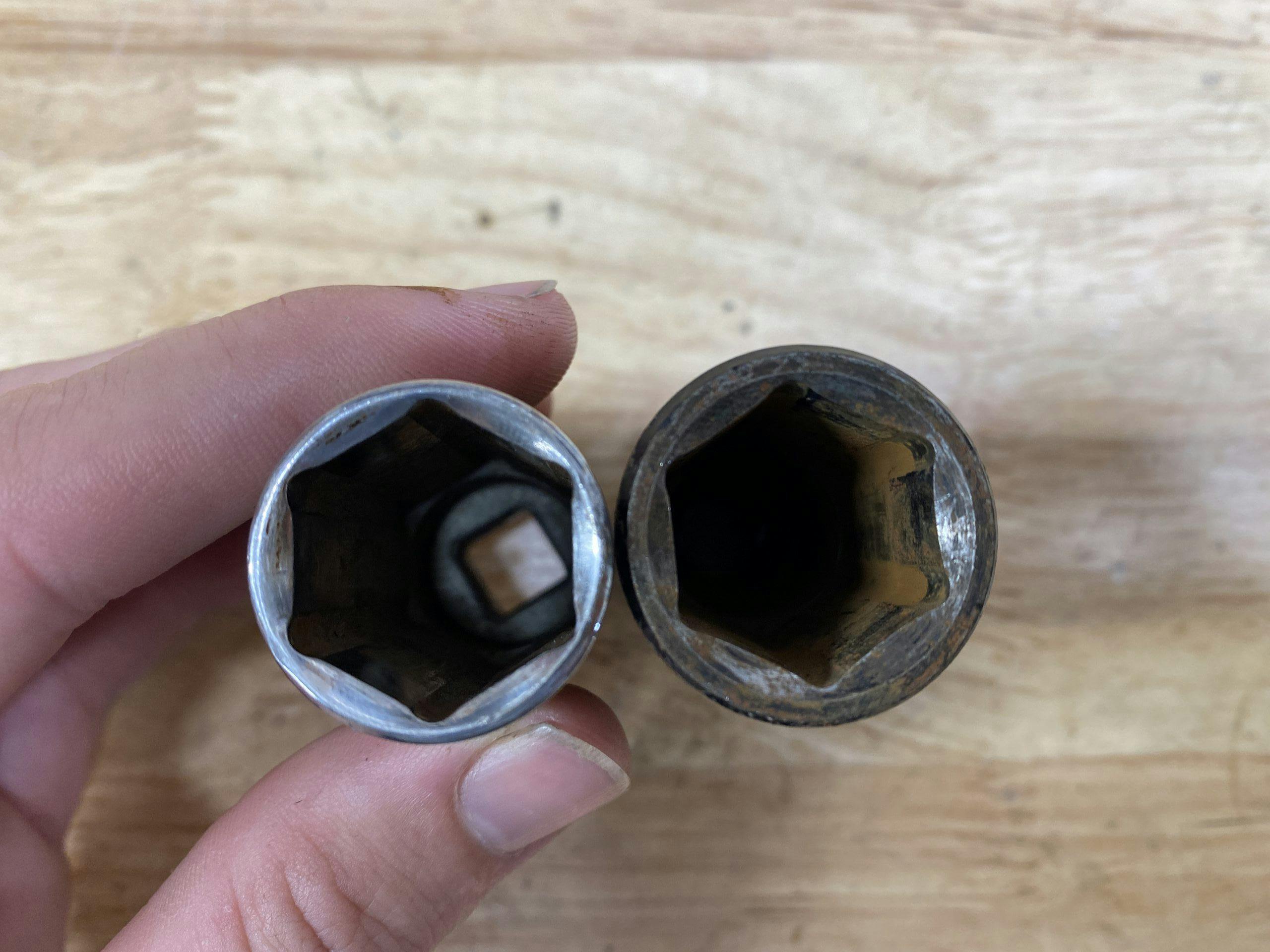Media | Articles
What are impact sockets, and do you need them?
Ask anyone who works in the garage and they’ll tell you that it’s impossible to have too many tools. I have to agree—to a point. I am also a firm believer in a small but mighty toolkit, so when a friend dropped by for a brake job the other day and I grabbed two different sets of sockets for one job, I had some explaining to do. I needed both my impact socket set and a few of my chrome ones too. It made me think about the difference between the two, and I figured it was worth talking about here.
The same, but different
A sockets is one of the most basic tools. Simply put, it is a precision-sized implement that fits nuts, bolts, or other hardware. Sockets attached to handheld ratchets, t-handles, screwdrivers, and other forms of producing rotational leverage. Purchase any starter tool set and there will be an array of shiny sockets ready to be called into action to tear apart or assemble your project.

Those basic tool kits feature the more common type of sockets—ones constructed from chrome vanadium. This alloy is created by combining chromium and vanadium. The final product can be formed into sockets that are smooth, hard, high-gloss, and corrosion resistant. This is a perfect fit for mechanics hand tools. The hardness keeps them from deforming under high torque loads, which prevents stripping fasteners. That same hardness makes them unfit for impact usage. Enter impact sockets.

Impact sockets are produced from chrome molybdenum, better known as chromoly. It is comprised of chromium, molybdenum, iron, and carbon alloy elements. This makes for a final product that is tougher than chrome vanadium, especially when it comes to hard impacts, like when using air or powerful battery-operated impact guns. Impact guns use a spinning hammer and anvil inside the tool which can give high shock loads to fasteners to break them free from the crusty bonds of rust and corrosion.
The chrome molybdenum alloy is more ductile, and thus can withstand the repeated hammering of an impact tool without cracking, like chrome vanadium. Impact sockets are often more substantial in construction as well which can cause problems for tight spaces—exactly why I needed both for the brake job last weekend.
Marketplace
Buy and sell classics with confidence
So why have both?
Well, if you don’t own impact tools you probably don’t need both. In most situations it is that simple. However, I’ve often found that impact sockets have a slightly stronger fit than the standard sockets—old tools, high-end tools produced here or there; it didn’t seem to matter. Impact sockets tend to fit tighter and strip things less, even if not using impact tools to turn them. If there is space to fit an impact socket, I tend to use them regardless of what’s turning it.
A budget-conscious wrencher might see the cost of impact sockets and scoff, saying that chrome ones work fine, and in some cases they do. The thinner walls tend to crack when paired with high-power tools, however, and lifetime warranties aren’t what they used to be when it comes to damaged tools. Do I find myself occasionally risking the damage in a effort to make life a little easier? You bet. Especially when it comes to aluminum wheels. A specific example is the wheels I have on my 1965 Chevrolet Corvair. I love them, but the pockets for the lug nuts are machined so that an impact socket does not fit. Sure, I could run extended lug nuts, but I don’t like that look and thus have to use a thinner-walled chrome socket to get to the lugs without damaging the wheels.
In the end, its a fairly simple metallurgy difference between the two options. It’s akin to having needle-nose pliers and regular slip-joint pliers in your toolbox. At first blush it seems redundant, but in practice it is anything but.
Use the right tools and your projects will certainly go smoother. That might just mean you should start shopping for a second set of sockets.























